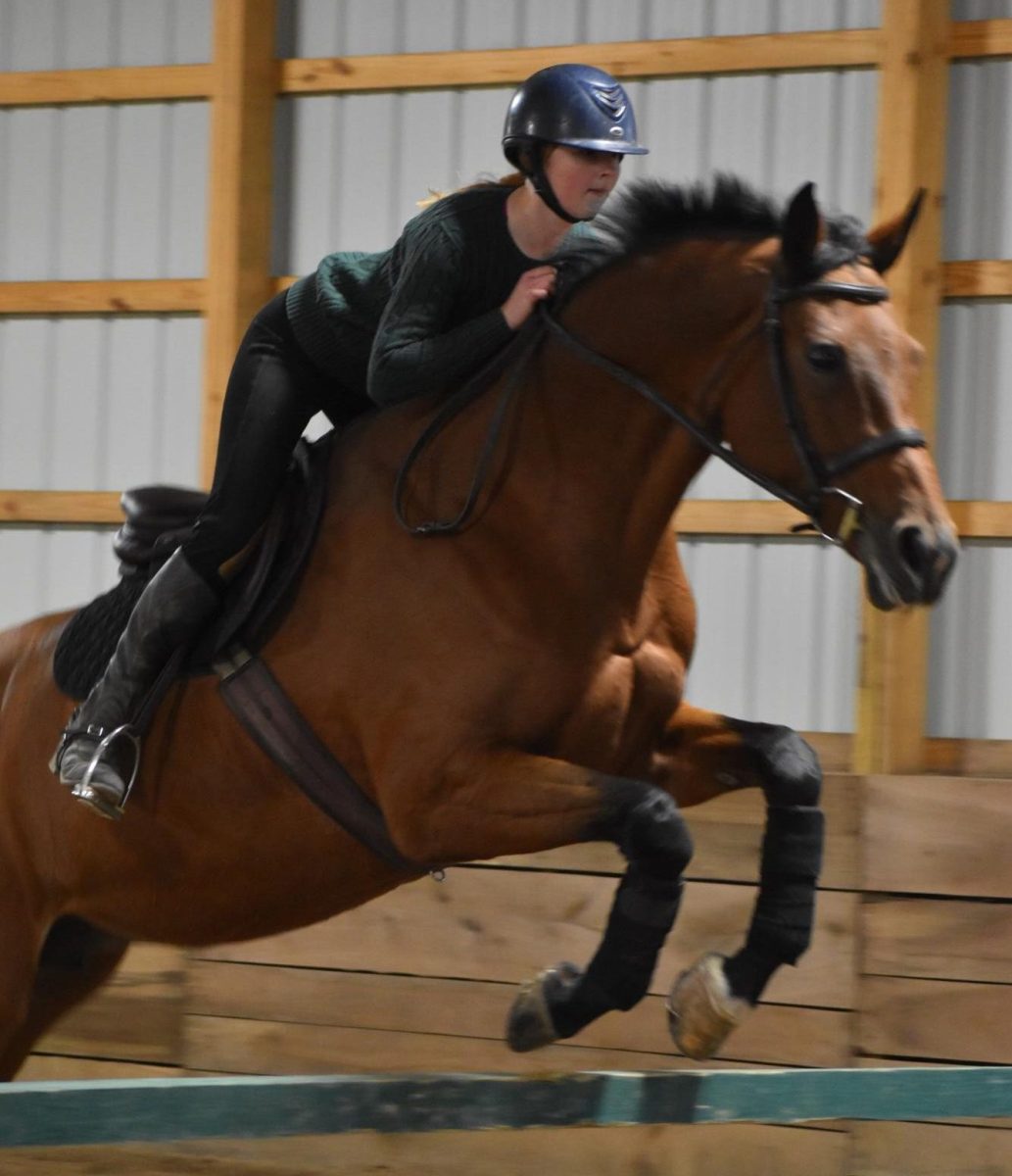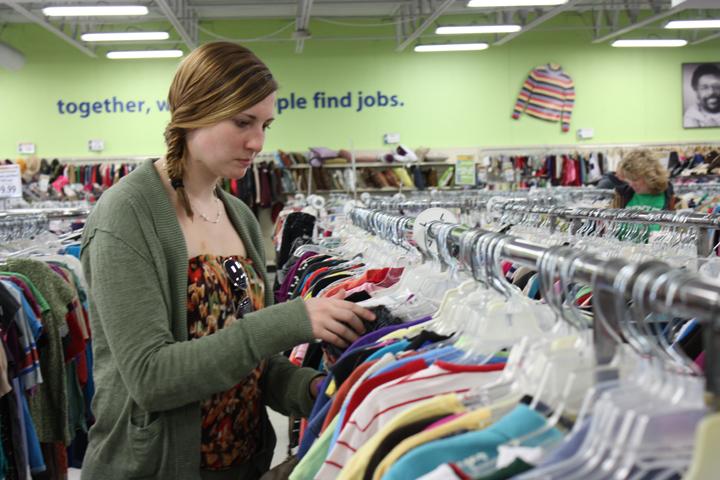Nothing is more powerful than an idea whose time has come.
The words flash white on a dark screen as the “Kony 2012” documentary opens, part of the Invisible Children’s campaign to raise awareness about Ugandan rebel leader Joseph Kony’s
war crimes.

As soon as Anna Sands, president of this school’s Invisible Children Club and junior, heard about “Kony 2012,” she joined a massive online movement by promoting the campaign on Facebook, Twitter and Tumblr.
“That’s when I knew that (the Kony 2012 campaign) had gotten big,” Sands said. “…It was all over the (Internet).”
The “Kony 2012” documentary went viral, receiving over 80 million views on Youtube and launching the campaign among the top trending topics on Twitter. Recently, an increasing number of movements like “Kony 2012” have built support and publicity online, from the Arab Spring protests to protests against Internet censorship in the Stop Online Piracy Act (SOPA) and its counterpart, Protect IP Act (PIPA). However, according to Carl Weinberg, adjunct associate professor of history at IU, this new platform for activism balances incredible potential with serious pitfalls.
“Social media is a tool. It’s a tool that can be used for all kinds of purposes,” Weinberg said. “Like any tool, it has its limitations.”
On one hand, Weinberg said, social media allows activists to spread their messages faster and more widely than ever before.
“The world is getting smaller, and that’s a great help to social movements of any kind,” Weinberg said.
For instance, when thousands of Internet users signed petitions and blacked out websites this January, protesting SOPA and PIPA, the legislation halted in Congress.
Among the protesters on social media websites was sophomore Thomas Frye. According to Frye, he knew the details of SOPA and PIPA when he protested the legislation on his Facebook. However, he said, a wave of protesters with only surface knowledge of the issue followed the initial group of dedicated activists.
“Towards the end, I think there were people just trying to catch onto the virus that was the protest,” Frye said.
This, Weinberg said, is a key problem with Internet activism. According to him, many participants in the Kony 2012 campaign know little about the history of the conflict apart from what the documentary relates. This causes them to participate in a protest that, Weinberg said, depoliticizes a highly complex issue.
“The first thing any person needs to do is learn how a problem came to be, how it was caused and what the solutions are,” Weinberg said.
According to Frye, the lack of information among many Internet censorship protesters caused an abrupt decrease in participation once SOPA and PIPA died, despite the proposed Anti-Counterfeiting Trade Agreement (ACTA), which takes SOPA and PIPA ideas to the multinational level. 
However, Sands said, some online activists do advocate beyond social media – the Invisible Children Club held a viewing party, art show and benefit concert to raise money and awareness for its cause. But while social media helps people broadcast their ideas, she said, it also enables token participation in movements without real enthusiasm.
“A lot of people will just (support a cause) because it’s trendy and it makes them look like they care, even if they don’t know what the cause is about,” Sands said.
Unlike short-lived Internet movements, Weinberg said, the civil and women’s rights movements and protests against the Vietnam War required activists to march, demonstrate and go door-to-door, advocating their causes for years.
“That kind of grassroots activism is absolutely essential to changing the world,” Weinberg said. “The world is not going to change by clicking a mouse.”
In fact, according to Weinberg, mass online movements may not actually have fervent support.
“(Internet activism) spreads widely, but it doesn’t sink very deeply,” Weinberg said.
For Sands, it comes down to the issue of quality versus quantity. She said social media allows activists to attain greater public awareness so even if many Internet users who participate in a movement aren’t devoted, movements still acquire the remaining active participants.
“It’s just kind of a give and take,” Sands said.


































![British royalty are American celebrities [opinion]](https://hilite.org/wp-content/uploads/2024/03/Screenshot-2024-03-24-1.44.57-PM.png)


















![Review: “Suits” is a perfect blend of legal drama and humor [MUSE]](https://hilite.org/wp-content/uploads/2024/04/unnamed-1.png)
![Chelsea Meng on her instagram-run bracelet shop [Biz Buzz]](https://hilite.org/wp-content/uploads/2024/04/IMG_2446-1200x838.jpg)
![Review: Quiet on Set: The Dark Side of Kids TV is the long awaited exposé of pedophilia within the children’s entertainment industry [MUSE]](https://hilite.org/wp-content/uploads/2024/04/unnamed.jpg)
![Review: “The Iron Claw” cannot get enough praise [MUSE]](https://hilite.org/wp-content/uploads/2024/04/unnamed.png)
![Review: “The Bear” sets an unbelievably high bar for future comedy shows [MUSE]](https://hilite.org/wp-content/uploads/2024/03/unnamed.png)
![Review in Print: Maripaz Villar brings a delightfully unique style to the world of WEBTOON [MUSE]](https://hilite.org/wp-content/uploads/2023/12/maripazcover-1200x960.jpg)
![Review: “The Sword of Kaigen” is a masterpiece [MUSE]](https://hilite.org/wp-content/uploads/2023/11/Screenshot-2023-11-26-201051.png)
![Review: Gateron Oil Kings, great linear switches, okay price [MUSE]](https://hilite.org/wp-content/uploads/2023/11/Screenshot-2023-11-26-200553.png)
![Review: “A Haunting in Venice” is a significant improvement from other Agatha Christie adaptations [MUSE]](https://hilite.org/wp-content/uploads/2023/11/e7ee2938a6d422669771bce6d8088521.jpg)
![Review: A Thanksgiving story from elementary school, still just as interesting [MUSE]](https://hilite.org/wp-content/uploads/2023/11/Screenshot-2023-11-26-195514-987x1200.png)
![Review: When I Fly Towards You, cute, uplifting youth drama [MUSE]](https://hilite.org/wp-content/uploads/2023/09/When-I-Fly-Towards-You-Chinese-drama.png)
![Postcards from Muse: Hawaii Travel Diary [MUSE]](https://hilite.org/wp-content/uploads/2023/09/My-project-1-1200x1200.jpg)
![Review: Ladybug & Cat Noir: The Movie, departure from original show [MUSE]](https://hilite.org/wp-content/uploads/2023/09/Ladybug__Cat_Noir_-_The_Movie_poster.jpg)
![Review in Print: Hidden Love is the cute, uplifting drama everyone needs [MUSE]](https://hilite.org/wp-content/uploads/2023/09/hiddenlovecover-e1693597208225-1030x1200.png)
![Review in Print: Heartstopper is the heartwarming queer romance we all need [MUSE]](https://hilite.org/wp-content/uploads/2023/08/museheartstoppercover-1200x654.png)






















![Review: Ladybug & Cat Noir: The Movie, departure from original show [MUSE]](https://hilite.org/wp-content/uploads/2023/09/Ladybug__Cat_Noir_-_The_Movie_poster-221x300.jpg)

![Review: Next in Fashion season two survives changes, becomes a valuable pop culture artifact [MUSE]](https://hilite.org/wp-content/uploads/2023/03/Screen-Shot-2023-03-09-at-11.05.05-AM-300x214.png)
![Review: Is The Stormlight Archive worth it? [MUSE]](https://hilite.org/wp-content/uploads/2023/10/unnamed-1-184x300.png)



